Nestled among the Cyclades islands, Amorgos captured my heart from the moment I first glimpsed its dramatic coastline. Unlike its famous siblings Santorini and Mykonos, this hidden treasure offers peaceful villages, crystal-clear waters, and breathtaking natural landscapes without the crowds.
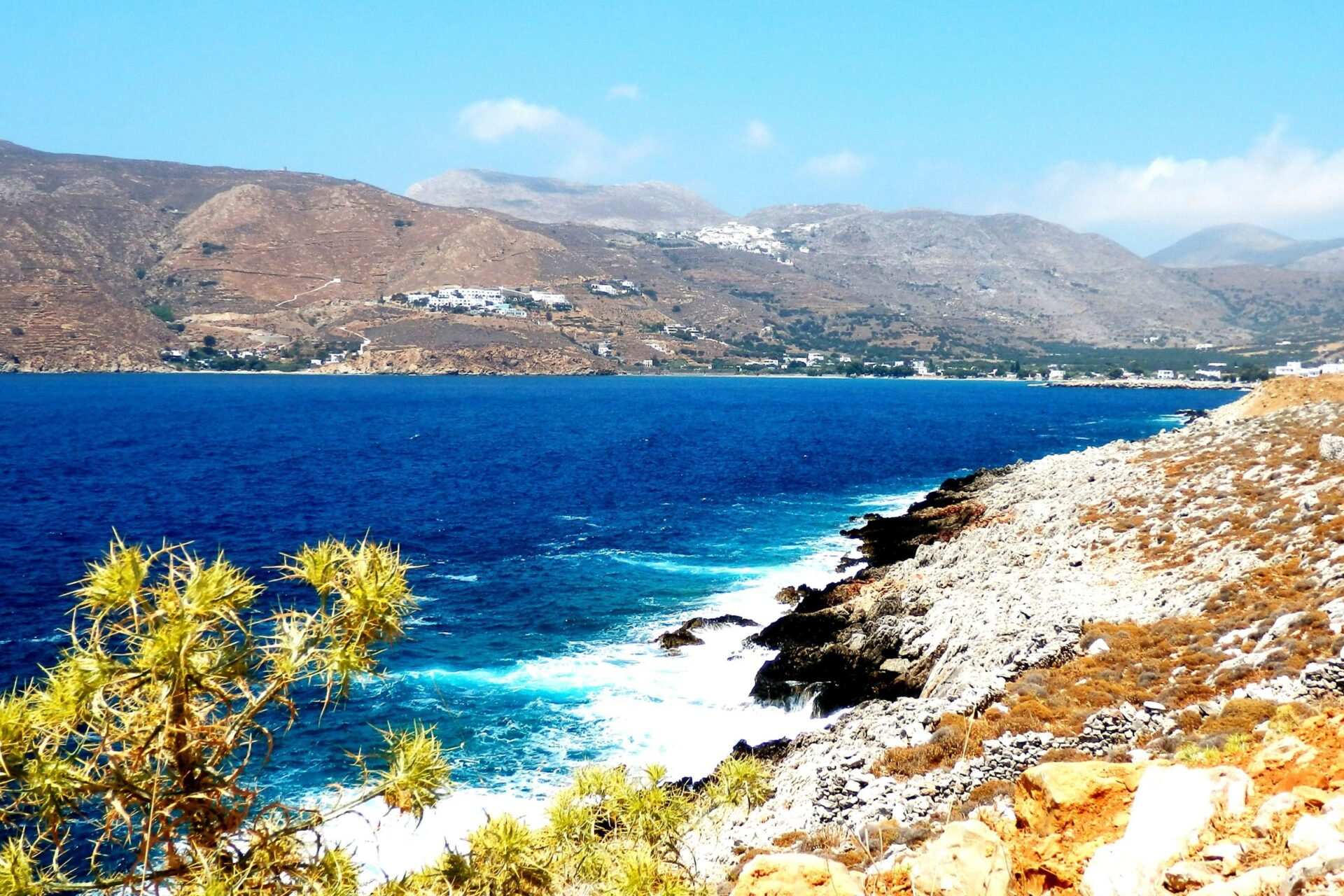
Amorgos is perfect for travelers seeking authentic Greek experiences. It offers a rare combination of tranquility and adventure that’s increasingly hard to find in more popular destinations.
During my visit last summer, I wandered through charming alleyways in picturesque villages, where time seemed to slow down. The island’s deep blue waters create a stunning backdrop for relaxation and exploration. What struck me most was how the locals welcomed visitors with genuine warmth, sharing stories of island myths and traditions over glasses of local spirits.
For nature lovers, Amorgos delivers spectacular hiking trails, secluded beaches, and impressive cliffs that plunge into the Aegean Sea. I spent days exploring ancient paths connecting whitewashed villages and evenings watching the sunset paint the sky in brilliant colors. If you’re tired of tourist traps and seeking a more meaningful Greek island experience, Amorgos might just become your favorite discovery of 2025.
The Allure of Amorgos: Unveiling Its Charm
Amorgos captivates visitors with its unique energy that creates a sense of peace unlike any other Greek island. Its raw, untouched beauty and authentic character have made it my personal sanctuary away from the tourist crowds.
Cultural Richness and History
When I first wandered through Amorgos’s charming villages, I was struck by their authenticity. The island preserves traditional Cycladic architecture with whitewashed houses and blue doors that tell stories of generations past.
The Monastery of Hozoviotissa stands as the island’s most iconic landmark. Built into a cliff face 300 meters above the sea, this brilliant white structure dates back to the 11th century. During my visit, local monks offered traditional psimeni raki (honey liqueur) and loukoumi (Greek delight)

Chora, the island’s capital, mesmerized me with its medieval castle and maze-like alleys. I spent hours getting lost among local craft shops, traditional tavernas, and centuries-old churches. The Archaeological Museum houses artifacts from the island’s rich past, including remains from ancient settlements dating back to the Cycladic period.
Natural Wonders and Landscape
Amorgos boasts some of the most dramatic landscapes I’ve encountered in Greece. The island’s rugged terrain is perfect for hiking enthusiasts like me, with trails offering breathtaking panoramic views of the deep blue Aegean Sea.
The famous Agia Anna beach, featured in Luc Besson’s film “The Big Blue,” showcases crystalline waters against dramatic cliffs. I found the underwater visibility extraordinary for snorkeling and diving experiences.
Katapola and Aegiali, the island’s two main ports, offer completely different atmospheres. Katapola charmed me with its fishing village vibes, while Aegiali’s golden sand beach became my favorite sunset spot.
The island’s interior reveals hidden treasures too – abandoned windmills, ancient stone paths, and herb-scented mountains. During spring, the hillsides transform with wildflowers, creating a colorful canvas against the stark landscape.
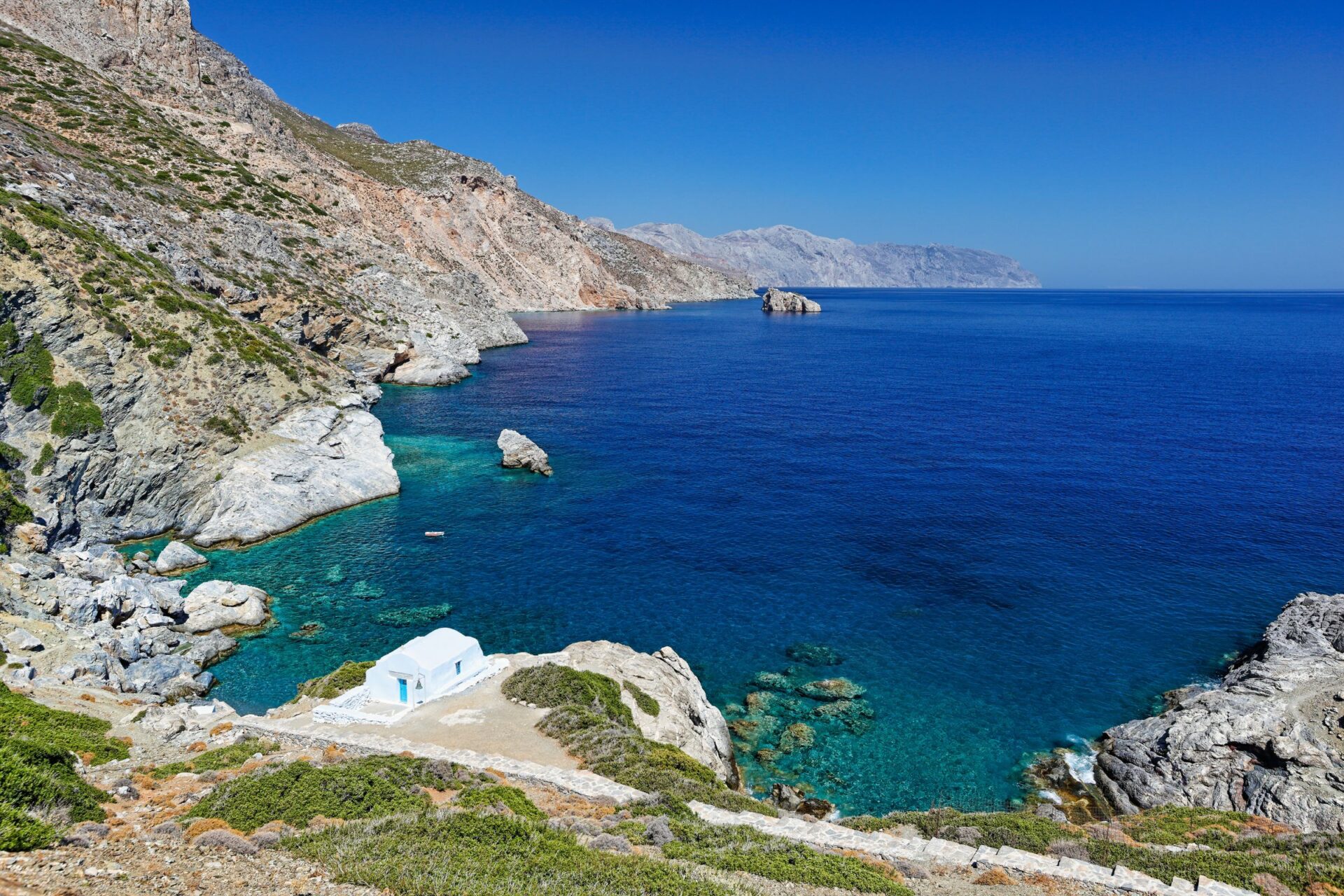
The Island’s Serene Atmosphere
What truly sets Amorgos apart is its tranquil energy. Unlike bustling Mykonos or Santorini, here I found an authentic rhythm of Greek island life.
The locals welcomed me with genuine hospitality that’s increasingly rare in popular destinations. I’ve shared countless conversations with fishermen mending nets and elderly women baking traditional bread in outdoor ovens.
Nights on Amorgos offer spectacular stargazing opportunities due to minimal light pollution. I’ve spent evenings simply sitting at small tavernas, enjoying fresh-caught fish while listening to impromptu bouzouki music.
The island seems to inspire a natural mindfulness. Whether hiking ancient paths or swimming in secluded coves, I’ve experienced a profound connection with both nature and myself here. It’s this unique sense of peace and fulfillment that keeps drawing me back to Amorgos year after year.
Getting to Amorgos: A Journey Worth Taking
Reaching this hidden gem requires some planning, but the reward is a peaceful escape from crowded tourist destinations. The journey itself becomes part of the adventure, offering stunning Aegean views along the way.
Travel Options to the Island
There’s no airport on Amorgos, so ferries are your only way to reach this island paradise. From Athens, I recommend taking a ferry from Piraeus port, though be prepared for a journey of about 8-10 hours depending on the type of ferry and weather conditions.
A faster alternative I’ve found is flying to Naxos from Athens (a short 45-minute flight), then catching a ferry to Amorgos (approximately 3 hours 45 minutes). This route saves considerable time and offers beautiful island views along the way.
Ferry schedules vary by season, with more frequent options during summer months. I suggest booking tickets in advance through sites like Ferryhopper, especially if traveling between June and September.
Navigating the Local Transportation
Once you arrive on Amorgos, you’ll find the transportation options are limited but sufficient. The island has two main ports: Katapola and Aegiali, both serving as gateways to different parts of the island.
Buses connect the main villages and beaches, running several times daily in summer but less frequently in off-season. The schedule is usually posted at bus stops and accommodations.
Renting a car or scooter gives you the most freedom to explore. I prefer scooters for the narrow roads, but cars are better for families or longer stays. Most rental shops are located near the ports and main villages.
Walking is wonderful for short distances, especially along the well-marked hiking trails. The path between Chora and Hozoviotissa Monastery offers breathtaking views that I never tire of seeing.
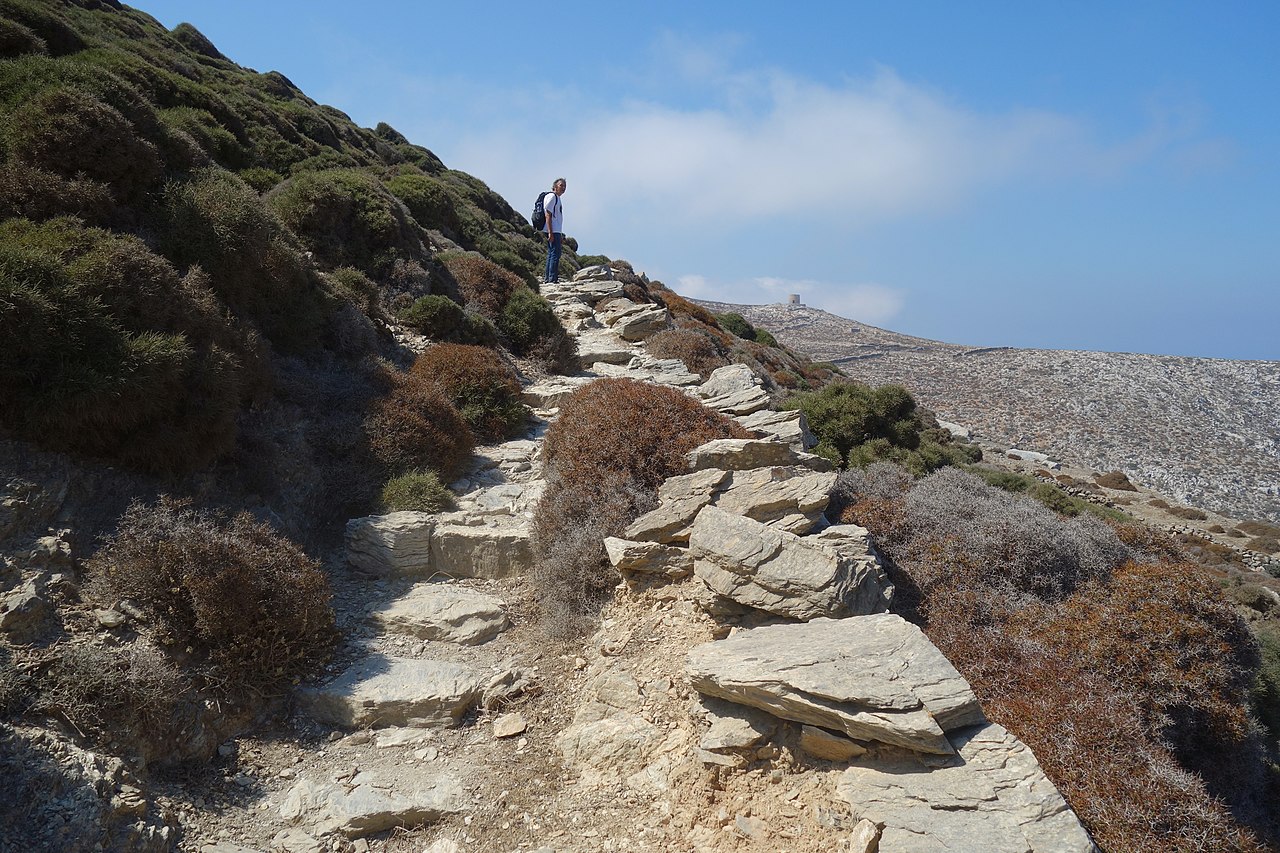
Discovering Peace and Nature: Where to Go
Amorgos offers incredible natural escapes that few tourists ever discover. The island’s rugged landscape, dramatic cliffs, and crystal waters create perfect environments for those seeking solitude and connection with nature.
Hiking Trails and Paths Less Travelled
I discovered that Amorgos boasts seven marked hiking trails that wind through some of the most breathtaking landscapes I’ve ever seen. The path to the cliffside Monastery of Hozoviotissa is my absolute favorite morning hike – it offers free entry and unbelievable views of the deep blue Aegean.
For a more challenging adventure, try the ancient path between Chora and Aegiali. This historic route takes you through abandoned villages and past ancient stone walls. The scent of wild herbs fills the air as you walk.
Don’t miss the trail to Agia Anna beach, made famous in Luc Besson’s film “The Big Blue.” The descent offers spectacular photo opportunities of the dramatic coastline below.
Best Hiking Times:
- Early morning: 7-10am (cooler temperatures)
- Late afternoon: 4-7pm (beautiful sunset views)
Secluded Beaches and Coastal Gems
The beaches of Amorgos aren’t the typical sandy tourist spots found on other Greek islands, which is exactly what makes them special. Mouros Beach captivated me with its dark pebbles and towering cliffs that create a dramatic backdrop against the turquoise water.

Kalotaritissa Bay hosts several tiny coves that you’ll often have completely to yourself, even in summer. I spent an entire afternoon there without seeing another soul.
For those seeking absolute seclusion, hire a local boat to take you to Gramvousa, a tiny islet off the northern coast. Its pristine waters and complete isolation made it my favorite swimming spot on the island.
The beautiful Agia Anna beach features crystal clear waters against striking rock formations – perfect for snorkeling and cliff jumping if you’re feeling adventurous.
Herbal Tours and Environmental Preserves
Amorgos is known by locals as the “island of herbs,” and for good reason. I joined a guided herbal walk with a local expert who showed me how to identify wild sage, thyme, and oregano that grow abundantly across the hillsides.
The island’s environmental preserve near Kato Meria protects numerous endemic plant species. Walking tours are available through the local environmental association, who work tirelessly to preserve the island’s biodiversity.
Don’t miss visiting the traditional distillery in Lagkada village, where they produce essential oils from locally harvested herbs. I purchased small bottles of oregano oil and wild thyme that make perfect souvenirs and remind me of the island’s distinct aromas.
The honey produced on Amorgos has a unique flavor profile thanks to these wild herbs. Local beekeepers sometimes offer tastings if you ask around in the villages.

Immerse in Local Life: Culture and Cuisine
Amorgos offers an authentic Greek experience far from the tourist crowds. The island’s rich cultural heritage and delicious traditional foods create memorable experiences that connect you directly with centuries of island traditions.
Traditional Gastronomy
The heart of Amorgos culture beats in its kitchens. I’ve fallen in love with patatato, a hearty goat meat stew with potatoes that locals prepare for special occasions. You’ll find it simmering in family tavernas across the island.
Don’t miss xerotigana (honey-dipped pastries) and kalitsounia (cheese pies) that grandmothers still make by hand. These treats pair perfectly with rakomelo, the island’s signature drink made from raki and honey.
Fresh seafood appears on every menu, caught daily by local fishermen. The calamari in Katapola’s waterfront restaurants tastes unlike anything you’ll find elsewhere.
Cheese lovers should try xinomyzithra, a tangy local variety that appears in many dishes. Most restaurants source ingredients from nearby farms, ensuring farm-to-table freshness.

Festivals and Year-Round Events
Panagia Hozoviotissa Monastery hosts the island’s biggest celebration on November 21st, drawing visitors from across Greece. I was amazed by the all-night festivities with traditional music and dancing.
Summer brings the Amorgos Cultural Festival, featuring outdoor concerts, theatrical performances, and art exhibitions in village squares. Local musicians playing lyra and laouto create an enchanting atmosphere.
Easter celebrations here are especially moving, with candlelit processions winding through narrow village streets. Locals invited me to join their family feast after the midnight service.
The Honey Festival in July celebrates the island’s beekeeping tradition with tastings and demonstrations. You can learn how locals have produced honey using the same methods for generations.
Engaging with the Friendly Locals
Amorgians welcome visitors with genuine warmth that’s increasingly rare in more touristy destinations. Morning coffee at the main square in Chora quickly turns into fascinating conversations with locals.
I’ve found that learning just a few Greek phrases opens doors to deeper connections. Shopkeepers often share family stories and island legends when you express interest in their crafts.
Village elders gathering at kafeneia (traditional coffee houses) will happily include you in their discussions. These interactions offer insights into island life you won’t find in any guidebook.
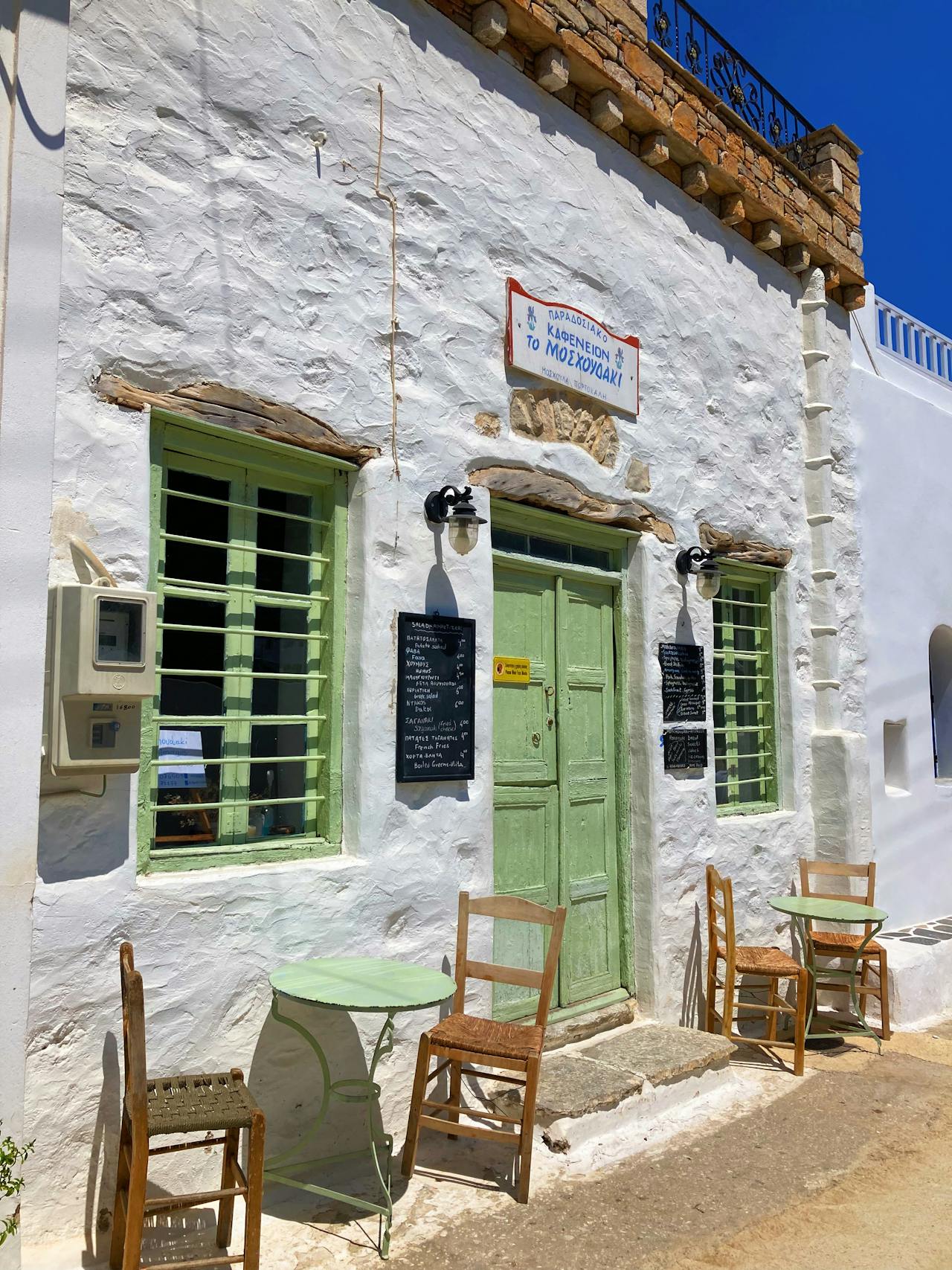
Join a cooking class with local women to learn family recipes passed down through generations. My host, Maria, taught me to make perfect dolmades while sharing stories of growing up on Amorgos.
Consider visiting during olive harvesting season when many families welcome extra hands. This hands-on experience creates meaningful connections with locals while participating in an ancient tradition.
Plan Your Stay: Accommodations and Tips
Finding the right place to stay in Amorgos can make all the difference in your experience. The island offers a range of lodging options that capture its authentic charm while providing the comfort you need after a day of exploration.
Choosing Your Ideal Lodging
When I visited Amorgos, I discovered the island has two main areas for accommodations: Katapola and Aegiali. Each offers a different vibe and experience. Katapola, the main port, provides convenient access to transportation and has a traditional feel with family-run guesthouses and small hotels.
Aegiali, on the northern side, tends to be more laid-back with beautiful beaches nearby. I found some charming boutique hotels with stunning sea views here.
For a truly authentic experience, consider staying in Chora, the island’s capital. Perched on a hill, it offers spectacular views and traditional Cycladic architecture.
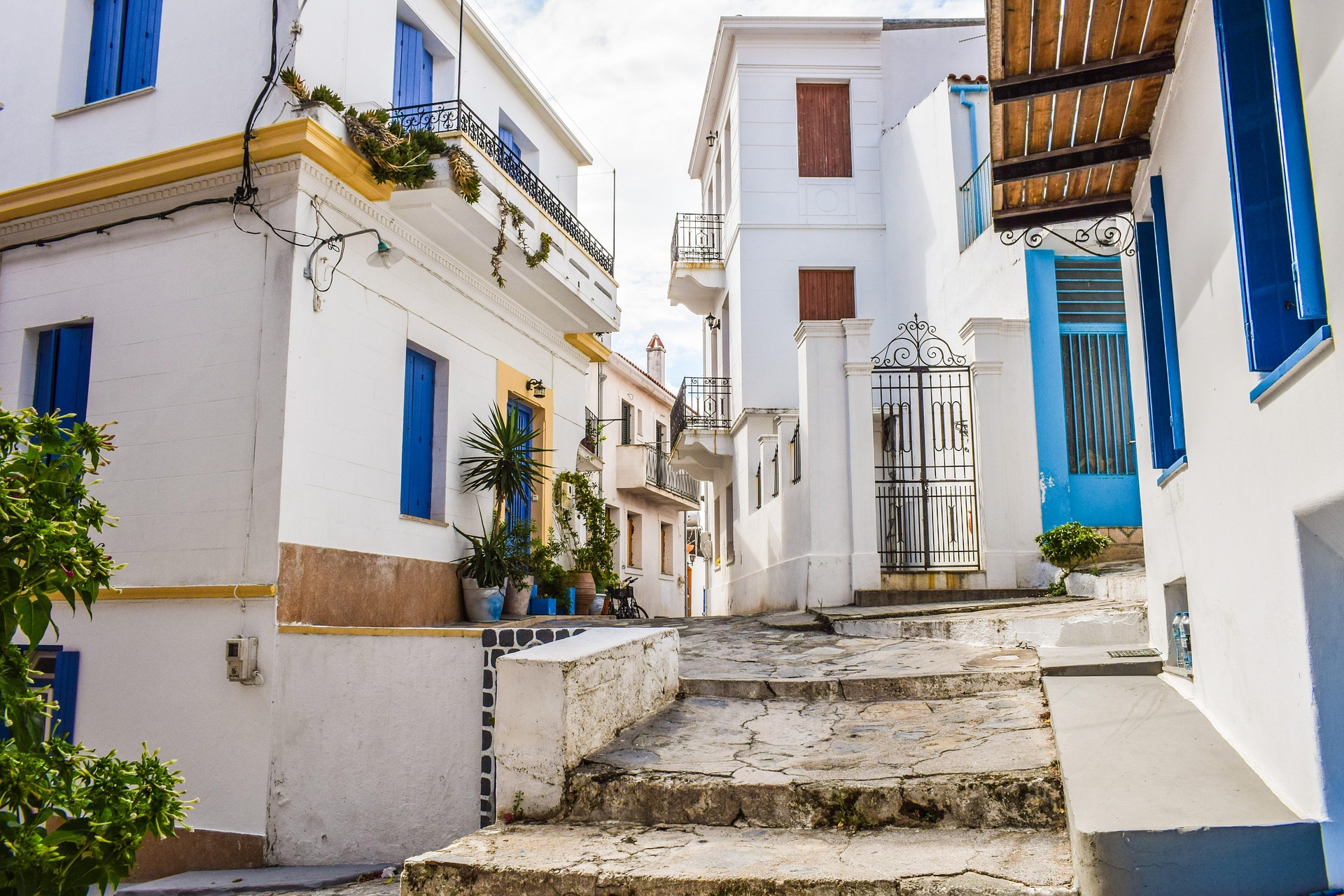
Top Accommodation Options:
- Budget: Small family pensions (€40-60/night)
- Mid-range: Boutique hotels with sea views (€80-120/night)
- Splurge: Luxury villas with private terraces (€150+/night)
Seasonal Considerations for Your Visit
The best time to visit Amorgos is from May to early October.
During my June trip, I enjoyed perfect weather with temperatures around 75-85°F and minimal crowds.
July and August bring higher temperatures and more tourists, though still far fewer than popular islands like Santorini. Prices also peak during these months, so book well in advance.
In spring (April-May), you’ll find wildflowers and pleasant hiking conditions. Fall (September-October) provides warm sea temperatures for swimming without summer crowds.
Many accommodations and restaurants close from November through March. If visiting in the off-season, contact places directly to confirm they’re open.
The ferry schedule also reduces significantly in winter months, making island hopping more challenging.
Sustainable Travel Practices in Amorgos
Amorgos takes pride in its pristine environment. I recommend supporting their conservation efforts during your stay.
Many lodgings now use solar water heating and energy-efficient systems.
Choose locally-owned accommodations that implement water conservation practices. This is an important consideration on an island where fresh water is precious.
I stayed at a guesthouse that collected rainwater and used drought-resistant native plants in their garden.
Reduce plastic waste by bringing a reusable water bottle. Most restaurants and cafes will happily refill it.
Support businesses that source food locally. The island produces excellent honey, herbs, and cheeses that appear in many traditional dishes.
Consider renting bicycles or walking between nearby destinations. The island’s compact size makes this feasible. You’ll discover hidden spots that tour buses miss.


